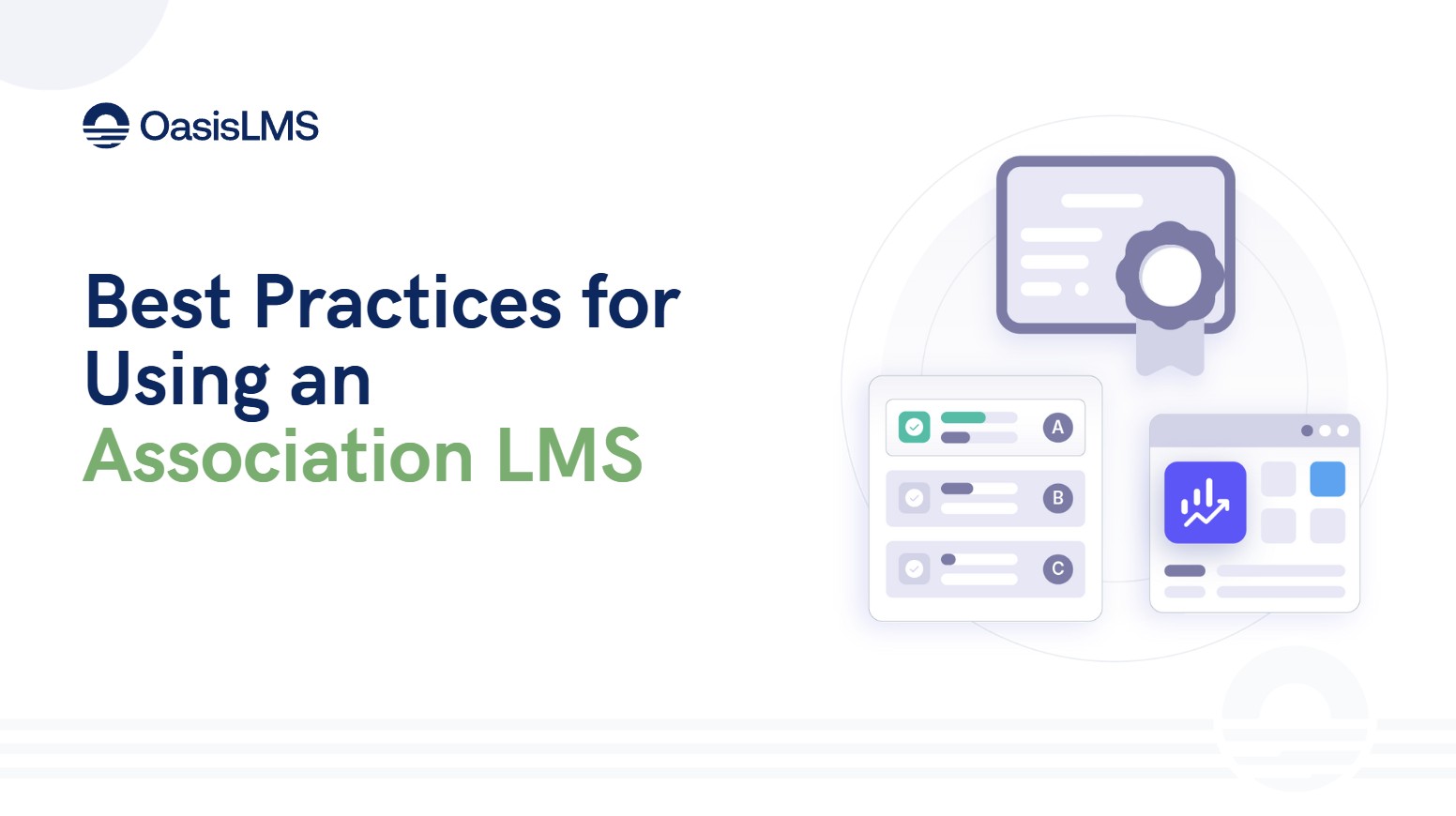
The vast majority of associations have professional development as part of their mission. Whether you’re offering continuing education, offering professional certifications, or simply helping members with their career, a learning management system (LMS) has become the go to tool over the past decade. However, having an LMS is only the first step, how you use it determines whether members see value and whether your organization meets its goals.
In this post, we’ll walk through best practices for using an association LMS. These are proven strategies that help you increase engagement, improve retention, and drive both mission and revenue.
Professional learning expectations are shifting more than ever with AI on the forefront of everyone’s mind. Today’s members are digital-first, time-constrained, and results-driven. They want accessible, on-demand, and personalized learning experiences that align with their professional goals. Employers also expect their association to provide education to their members and will pay handsomely for it.
For associations, this shift means:
An LMS provides the backbone for this. When used strategically, it goes beyond course delivery, becoming the hub of your member value proposition.
Setting up an LMS isn’t a one-time technology project. Instead, it’s an organizational transformation. Without buy-in from all teams, adoption lags and resources dry up. Associations that succeed invest time upfront inbuilding consensus.
When the entire team and the board views the LMS as central to growth and member service, it becomes easier to secure funding, staff support, and promotional resources.
Associations often measure the wrong things like logins, page views, or downloads. While these matter, they don’t fully reflect member impact. Instead, focus on metrics that link learning to member outcomes.
Examples include:
By focusing on meaningful metrics, you can show the need for continuous investment in education.
A clunky LMS is a major member turnoff. Associations must deliver easy, personalized, and supportive learning experiences to compete with professional platforms like Coursera or LinkedIn Learning.
Integrating your LMS login with your AMS is an absolute must. If you users need to remember to sets of passwords they won’t be happy and have to call your team for help.
Use member type, location, title etc. to help personalize the learning that is delivered to your members.
Don’t assume members will intuitively know how to use the LMS. Give short FAQ’s and a video tutorials that are less than 5 minutes.
A standalone LMS creates silos. The best practice is to connect it to your AMS, CRM, event tools, and certification systems.
Integration gives staff a 360° view of member engagement and allows learners to see all activities in one place.
Content standards ensure your learning programs remain flexible and compatible across platforms.
SCORM is a common e-learning type that allows large courses to be portable. Ensure your LMS accepts SCORM.
Webinars, slide decks, and recordings can all be repurposed. Store assets in your LMS to build new programs quickly and cost-effectively.
Associations often have unique advantages over corporate providers: a trusted community and subject matter expertise. The key is to deliver that in a modern, engaging format.
More than half of learning is consumed on mobile. A mobile-responsive LMS ensures members can learn anytime, anywhere.
Encourage networking and knowledge-sharing with discussion forums, peer feedback, and study cohorts. This enhances both learning and member loyalty.
Many LMS providers cater to corporate training, not associations. Selecting the right partner ensures you have the features and support unique to associations:
A vendor who understands your world will help you implement best practices from day one.
An LMS isn’t just a software, it can be the gateway to your association’s value. By getting buy in from the entire team, setting measurable and impactful goals, delivering seamless experiences, and choosing the right partner, associations can transform online education into a strategic advantage.
The outcome? Happier members, stronger retention, and sustainable growth.
Ready to see how Oasis LMS helps associations put these best practices into action? Book a demo today.
Whether managing CME for physicians or supporting member growth, Oasis LMS helps deliver high-impact education efficiently and at scale.
